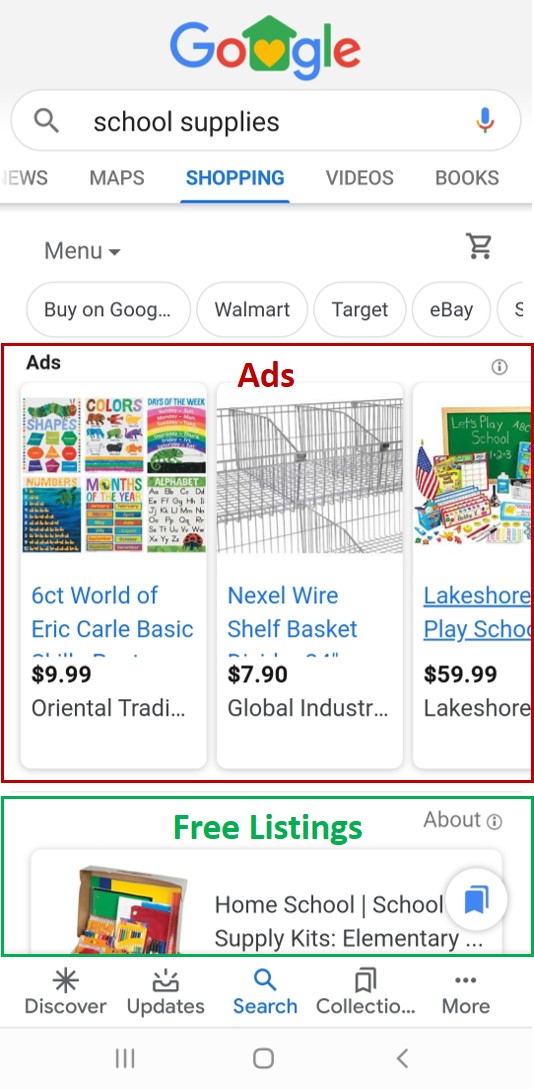This week, after a 12-year hiatus, Google reintroduced free listings to the shopping tab of search result pages. These free listings potentially fill a need that has been festering for years: enabling more ecommerce sites to compete in shopping searches.

Google’s new free shopping listings appear below the ads in the shopping tab.
The shopping tab now features ads at the top and bottom of the page with organic listings in the middle, as shown above, similar to how paid and organic results are layered on the main search results page.
Free shopping listings are available only on the shopping tab, not on the main search results or other tabs. Ecommerce queries on the primary search page continue to return traditional organic results and shopping ads — known as product listing ads, or PLAs.
All ecommerce sites are eligible for free shopping listings. Companies must complete the free registration process in Google Merchant Center, which also governs the product feeds in shopping ads.
However, as in all organic search results, advertising does not influence whether a company receives a free shopping listing or its ranking, according to Google.
What does influence free shopping rankings is likely a combination of organic relevance and authority signals combined with pricing, availability, and a searcher’s personal data.
The addition of free listings on the shopping tab expands the visibility of organic product listings across Google search. Ecommerce sites are now eligible to rank in one of 20 card-like listings on the shopping results tab in both mobile and desktop results.
The shopping tab is reserved for ecommerce products. Thus there’s seemingly no chance that informational listings could also take ranking spots, as can happen on the main search results.
Google’s motivation for offering free shopping listings is presumably to combat Amazon’s ecommerce dominance. Regardless, merchants have little to lose and much to gain from participating.
Getting Started
If you advertise on Google’s Shopping, opt in to the “Surfaces across Google” program. Use your existing product feeds for the free shopping listings.
If you’re new to Google Merchant Center:
- Register,
- Verify your site,
- Opt in to “Surfaces across Google,” and
- Upload your product feed.
The process can be confusing, especially creating the product feed.
There are two types of product feeds: primary and supplemental. Both communicate information about your products to channels such as Google Merchant Center. The primary product feed contains critical info, such as the product name, landing page URL, price, availability, and image. Supplemental feeds can contain information such as data that was missing from or incorrect in the primary feed, and local product inventory.
Many ecommerce platforms make it easy to create a suitable product feed for Google Merchant Center.
Otherwise:
As a bonus, Google uses these feeds in its primary organic search results and image searches.




